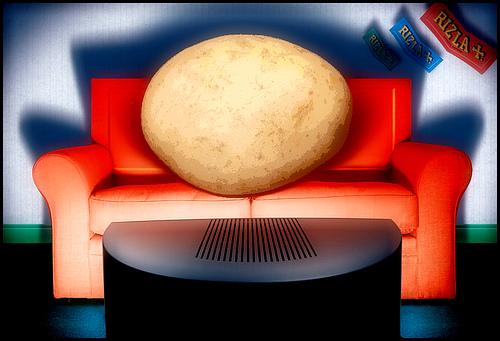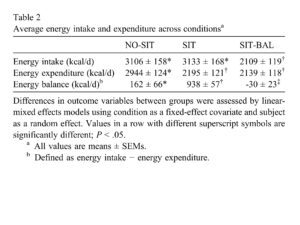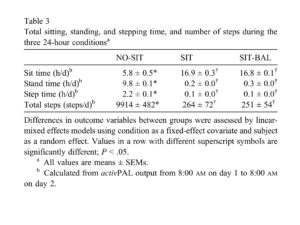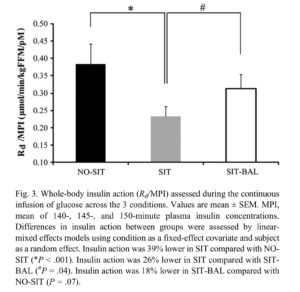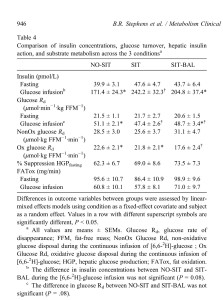In my article titled “It can’t possibly be true, can it?” I questioned whether there was any foundation to the claim that inactivity is not a chief cause obesity and provided scientific evidence suggesting otherwise. Today I will try explain to you what the bottom-line is as to why exercise doesn’t work for everybody trying to lose weight. One thing I have noticed is that there isn’t enough time or effort – either in the media or on the net – dedicated to informing the public about why exercise does not work for some people and what can be done about.
- Non-responders increase whilst responders decrease, total daily energy intake (all the food and drinks you consume on a daily basis).
- Some of these differences apparently occur unbeknownst to the exerciser so there is some sort of compensation going on to offset the extra energy expended from exercise.
- Non-responders increase their consumption of fat.
- Non-responders experience much greater subjective sensations of fasted hunger (upon waking) and hunger across the day compared to responders.
- Non-responders demonstrate an increased whereas responders show a decreased, desire to eat.
- Non-responders satisfaction or feelings of fullness from meals is significantly reduced whilst there are no changes in responders.
- Behavioural compensatory adjustments to exercise training in overweight women showed the loss of weight/fat mass or lack thereof, was attributable to an increase or decrease in spontaneous physical activity, respectively.
- Resting metabolic rate may be reduced in non-responders but not in responders.
If you are struggling to lose weight after starting an exercise regimen then you could be classified as a non-responder and should consider the following:
- If possible, have some measurements taken by a knowledgeable professional that includes girths (such as hips, waist, thighs etc) and skinfolds where the subcutaneous fat can be approximately measured by calipers. By doing this you will be able to work out more precisely what changes are actually taking place. This is pretty important because some ‘non-responders’ will lose a considerable amount of fat but total weight loss may be only slight or actually increase (see King et al 2008). This will affect roughly 10% of exercisers that are trying to lose weight but these body composition changes are in fact desirable and favourable.
- Monitor energy intake more closely and consider recording actual food and beverage intakes so you can keep tabs on this as you go. Given that ad libitum diets don’t seem to work too well for non-responders, recording your intake is a good place to start. Assuringly, research shows that those that diarise what they are eating and drinking are much more successful at weight loss and weight management compared to those that don’t, so start recording.
- Recognise that if you keep accurate records of these things and create an energy deficit – the research that has been conducted in metabolic-ward studies suggests – that weight loss is highly probable. Based on an account of energy intake and energy expenditure, if the creation of an energy deficit does not elicit any change in body composition, it is likely that there has been an over-estimation of energy expenditure or an under-estimation of energy intake, or a combination of both. However, this now allows subtle changes to be made to energy expenditure or intake so that body fat mass reduction can be realised (see here and here for great discussions on the crucial role calories play when it comes to fat loss or fat gain).
- Ensure that your exercise program includes some resistance or weight training. The response to exercise of non-responders as outlined above is related specifically to 1-2 hours of aerobic exercise (i.e. walking, running, cycling etc). You may ironically achieve better weight loss if you back off the aerobic exercise but place a bit more emphasis on weight training or resistance-type exercise. Some research has shown that appetite is suppressed more so with resistance versus aerobic exercise and it is the changes of increased appetite in non-responders that presents a major problem when attempting to bring about sustainable weight loss. With respect to adults who are overweight or obese, Drenowatz & colleagues clearly demonstrated that resistance exercise but not aerobic exercise reduced fat mass.
- This form of activity also substantially reduces the risk of losing LBM (lean body mass = muscle tissue) in older adults (see Villareal et al). It is very common to see exercisers lose significant amounts of LBM when only aerobic exercise is undertaken while in an energy deficit state.
- The loss of LBM is not desirable for 2 key reasons. Firstly, functional physical capacity could be affected in both the short and long term (see Villreal et al). Secondly, resting metabolic rate will be reduced thereby making weight loss more difficult and weight regain more likely (see here for further discussion).
- “Don’t put the cart before the horse.” By that I mean, the quality of what you decide to eat will have a massive impact on your success. A caloric deficit is the goal but it should be achieved with a diet consisting of wholesome, natural, minimally processed and nutrient-dense foods. Not only is this essential to weight loss success but more importantly generating good health.
- To combat increased subjective sensations of hunger, then, as a start please make sure that the diet is high in a variety of vegetables, has several serves of fruit each day, contains sufficient and varied sources of protein and includes things like nuts, seeds and oils. This is pretty commonsense stuff but you need to put into practice what actually works. The make-up or quality of the diet appears to impact on subsequent appetite, sensations of hunger and feelings of fullness, so anything that assists in keeping the physiological drives to eat at bay are only going to be helpful (see Blundell et al).
References (in no particular order)
Drenowatz, C. et al. (2015) “The prospective association between different types of exercise and body composition” Medicine & Science in Sports & Exercise. 47(12): 2535-2541.
Manthou, E. and Gill, J.M.R. and Wright, A. and Malkova, D. (2010) Behavioural compensatory adjustments to exercise training in overweight women. Medicine and Science in Sports and Exercise, 42 (6). pp. 1121- 1128.
Melanson, E.L. et al. (2013) “Resistance to exercise-induced weight loss: compensatory behavioural adaptations” Med Sci Sports Exerc.August; 45(8): 1600-1609.
King N.A. et al. (2008) “Individual variability following 12 weeks of supervised exercise: identification and characterization of compensation for exercise-induced weight loss.” International Journal of Obesity. 32: 177-184
King N.A. et al. (2009) “Dual-process action of exercise on appetite control: increase in orexigenic drive but improvement in meal-induced satiety.” Am J Clin Nutr. 90: 921-927
Peterson N.D. et al. (2014) “Dietary Self-Monitoring and Long-Term Success with Weight Management”. Obesity 22, 1962–1967
Broom, D.R. (2008) “Influence of resistance and aerobic exercise on hunger, circulating levels of acylated ghrelin, and peptide YY in healthy males” American Journal of Physiology. 296(1): R29-R35.
King, N.A. et al (2012) “Exercise, appetite and weight management: understanding the compensatory responses in eating behaviour and how they contribute to variability in exercise-induced weight loss.”British Journal of Sports Medicine 46(5):315-22.
Villareal D.T. et al. (2011) “Weight Loss, Exercise, or Both and Physical Function in Obese Older Adults.” N Engl J Med 364(13): 1218-1229
Blundell J. et al. (2010) “Appetite control: methodological aspects of the evaluation of foods.” Obe Rev 11(3): 251-270
For local Townsville residents interested in FitGreyStrong’s Exercise Physiology services or exercise programs designed to achieve the above-mentioned benefits or to enhance athletic performance, contact FitGreyStrong@outlook.com or phone 0499 846 955 for a confidential discussion.
For other Australian residents or oversees readers interested in our services, please see here.
Disclaimer: All contents of the FitGreyStrong website/blog are provided for information and education purposes only. Those interested in making changes to their exercise, lifestyle, dietary, supplement or medication regimens should consult a relevantly qualified and competent health care professional. Those who decide to apply or implement any of the information, advice, and/or recommendations on this website do so knowingly and at their own risk. The owner and any contributors to this site accept no responsibility or liability whatsoever for any harm caused, real or imagined, from the use or distribution of information found at FitGreyStrong. Please leave this site immediately if you, the reader, find any of these conditions not acceptable.

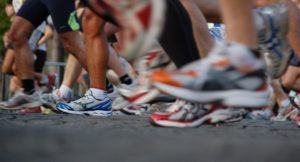

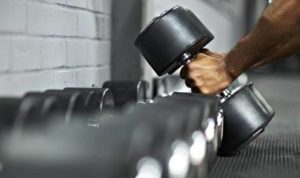




.jpg)


